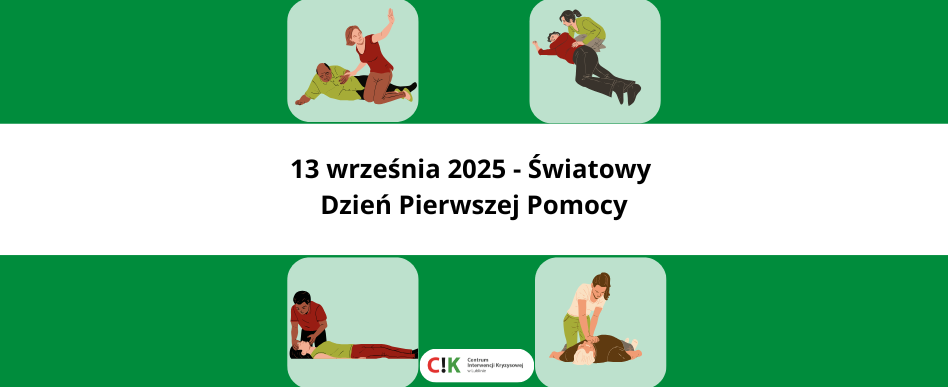The second Saturday of September is World First Aid Day.
This day aims to raise awareness of the importance of first aid skills and to promote educational activities among local communities.
When you see someone who needs help, don’t just walk by! Your reaction could save someone’s life…
Are you afraid that you won’t be able to provide first aid “by the book”? Paramedics say that in a life-threatening situation, any resuscitation is better than none!
Remember that if a person is in a situation that poses a direct threat to their life or health, you may be held legally responsible for not providing assistance under Article 162 § 1 of the Criminal Code.
Anyone who can provide first aid without endangering their own health and life is morally and legally obliged to do so. Remember that your safety is equally important – in some cases, you should refrain from providing first aid, e.g., when your life and health are at risk.
- “Examine the area
Look around and make sure that providing first aid will not put you in danger. Check that there are no exposed wires near the injured person, that there are no flames, that there are no toxic fumes nearby, and if the situation is on ice, that the ice is hard enough to walk on. Your safety is just as important as that of the injured person. - Assess the situation
The next step is to check the condition of the injured person. To assess their level of consciousness, gently shake them and give them short commands to see if they respond. If the injured person is conscious, ask them what happened and what is wrong. Ask if they have any allergies, are taking any medication, or have any medical conditions—remember this information or write it down so that you can pass it on to the medics if the injured person loses consciousness.
If you are concerned about anything, call 999 or 112 and describe the situation to the dispatcher. They will decide whether medical assistance is required. If the person is unconscious, proceed to the next steps. - Call for help
If the victim is unconscious, you will need help. Every extra pair of hands will be useful in controlling the situation. Point to a specific person who is close to you and tell them to get a phone ready. - Provide immediate assistance.
If the victim is unconscious and not breathing, immediately begin CPR, or Cardiopulmonary Resuscitation. Start by performing 30 compressions in the center of the chest at a rate of 100-120 compressions per minute. Then give 2 rescue breaths. Continue without interruption in a pattern of 30 compressions and 2 breaths. You can stop giving breaths if you are concerned about your own safety. In this case, continue to compress the chest. Continue these actions until the ambulance arrives, until there is a threat, until you lose strength, or until you notice signs of circulation in the victim, such as movement, coughing, or breathing.
If the victim is unconscious but breathing normally
If the person is conscious but breathing, place them in a safe position. If you do not know whether the accident has caused spinal injury, clear their airways (tilt their head back) so that they can breathe freely. Hold the injured person’s head at all times to prevent it from becoming blocked again. Check every minute to see if the condition of the injured person has changed.
Source:
https://zdrowie.pap.pl/…/udzielanie-pierwszej-pomocy-prawo access 12.09.2025
https://upacjenta.pl/…/pierwsza-pomoc-krok-po-kroku… – access 12.09.2025
